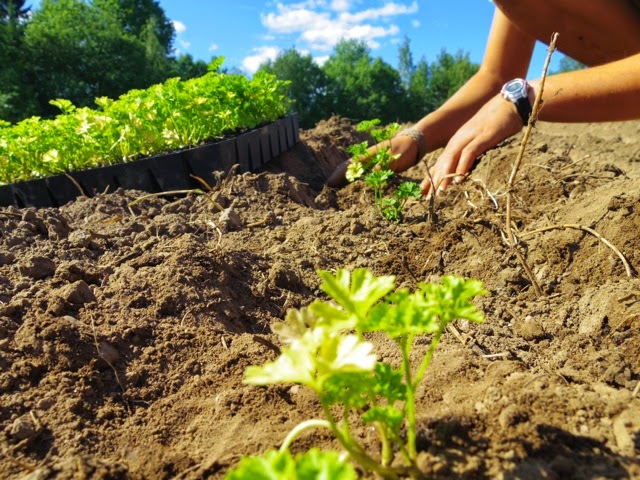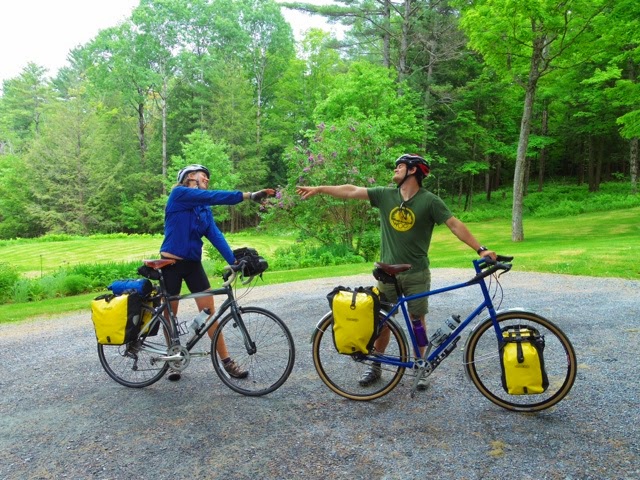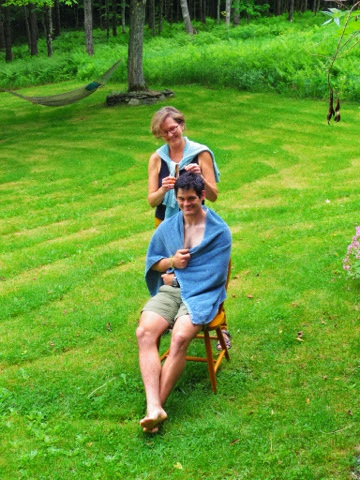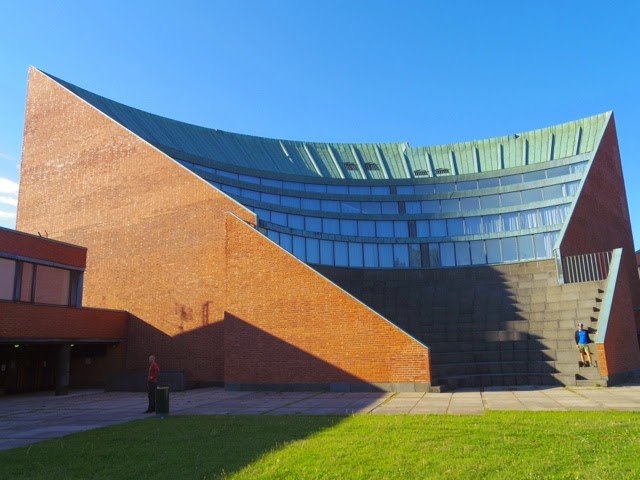Well, if biodynamic farming seems like a break from the mainstream, Gaija Eco-Village is even further off the beaten path. Gaija, a community of thirty or so, has existed for about eight years outside the town of Ähtäri on a beautiful lake. The site, currently owned by the city and cheaply rented by the community, centers around a large building from the 1940s that served as a nursing home for fifty years. Abandoned late in the last century, it was occupied during the nineties by a now-collapsed intentional community before Gaija was established there in 2006. This building serves as a centering point for the community, containing a common living/dining area and industrial-scale kitchen, along with many rooms for housing. There are also a number of satellite structures, such as an animal barn, root cellar, greenhouse, community-built wood sauna, and a few smaller houses where more permanent residents live. Among all of these structures, there is a small forest and land available for agriculture, about four hectares in total. Of this land, only about 0.4 hectares are currently cultivated, though the growing techniques employed require about three times as much meadow to be left around the farmed plots to be cut for mulch.
The main building. To heat it requires 1,000 cubic meters of wood per year, all moved inside to the furnace by hand through a window in the small shed in front (lower right).
Upon arriving on Monday evening, we encountered a resident outside with her child who directed us to Teme, the young man that Lucy had communicated with before visiting. Teme came outside and chatted with us for awhile about the community and his role there, before directing us to a room and leaving us for the night. We were happy to have some beds after two long days on the road, even if they were tiny singles! After a quick dinner snack (still pretty full after all the chips and salsa we ate on the train) we immediately fell asleep...for eleven hours!
The root cellar.
The edge of the sauna, the best product of collective energy at Gaija, in Teme's opinion.
Next morning we wandered around, ate some breakfast, and waited until a man named Nikolas invited us to the cabbage field to work. We waited for Teme to arrive, ate another breakfast of rice salad and ligonberry porridge, then headed out. While weeding and mulching the cabbages, we learned that all of the agricultural work, and most of the general labor for the place as well, is done by only four residents. And of these for, Teme and Nikolas are the two that do relatively full-time work. There is no work requirements for community members, so most people don't bother to volunteer their time to mulching the fields and chopping wood. Gaija does host volunteers through WWOOF, so they get some help that way, but the lack of labor explains the micro scale of their cultivation. Addtionally, there is no reward for working in the fields or with the wood for heating. The harvest goes to a food circle, which residents can choose to pay for, receiving communal meals in exchange. But even the people who are growing the food still have to pay to eat it. Nonetheless, Nikolas refused to classify himself as a volunteer, stating that the experience and low-stakes environment for experimentation and learning is invaluable. And this is true, the rent is extremely low at Gaija, as is the fee for the food circle, so those who choose do to agricultural work are able to utilize inefficient but interesting cultivation techniques without sacrificing profits the way a farm would. The system is not perfect, and Teme spoke to us about his hopes that Gaija will establish at least a small reward for involvement in community work, but for now the people who are participating seem content enough to continue.
We spent the rest of the week working in the fields, chopping and moving wood, and relaxing by the lake. Our role was fairly ambiguous, so everyone kept telling us to take it easy and just enjoy ourselves. After long work days at Toivo, it was hard for us to adjust to such a laid-back work ethic! But we did listen to them eventually and spent a lovely afternoon rowing around the lake.
A cool public campsite on an island in the lake, complete with cook stove. This is what AT lean-tos should be like!
Though the people were friendly and the community felt welcoming, it certainly did not feel like it was at a stable equilibrium. Currently it serves mainly as a cheap apartment-building for hippies, people looking to get out of the cities, but not necessarily to participate in a lifestyle of manual labor or self-sufficiency. By Friday, we were ready to move on to a place where there was more commitment to a collective pursuit, so we said our goodbyes and hit the road for our next Workaway, in Sweden!

















































